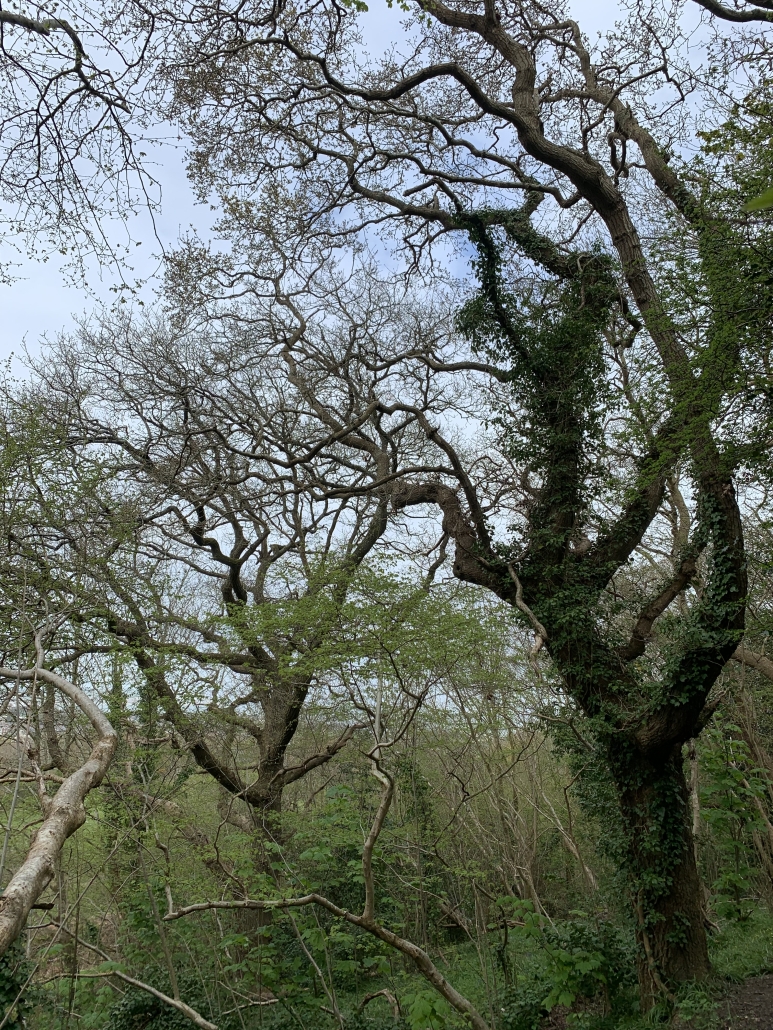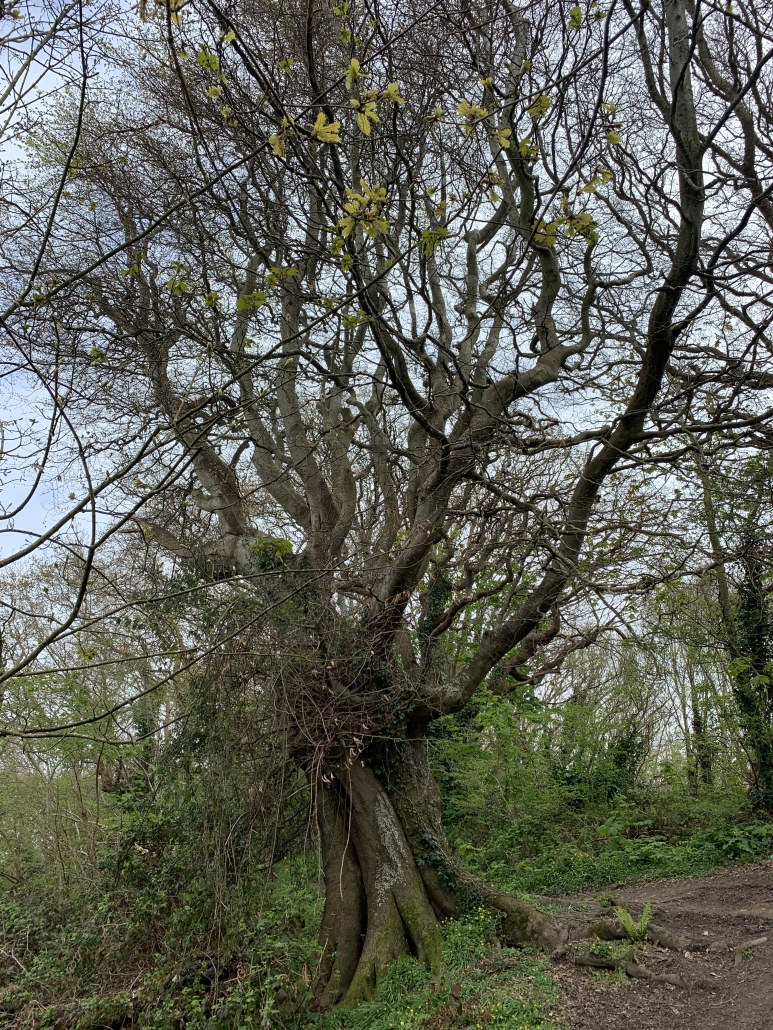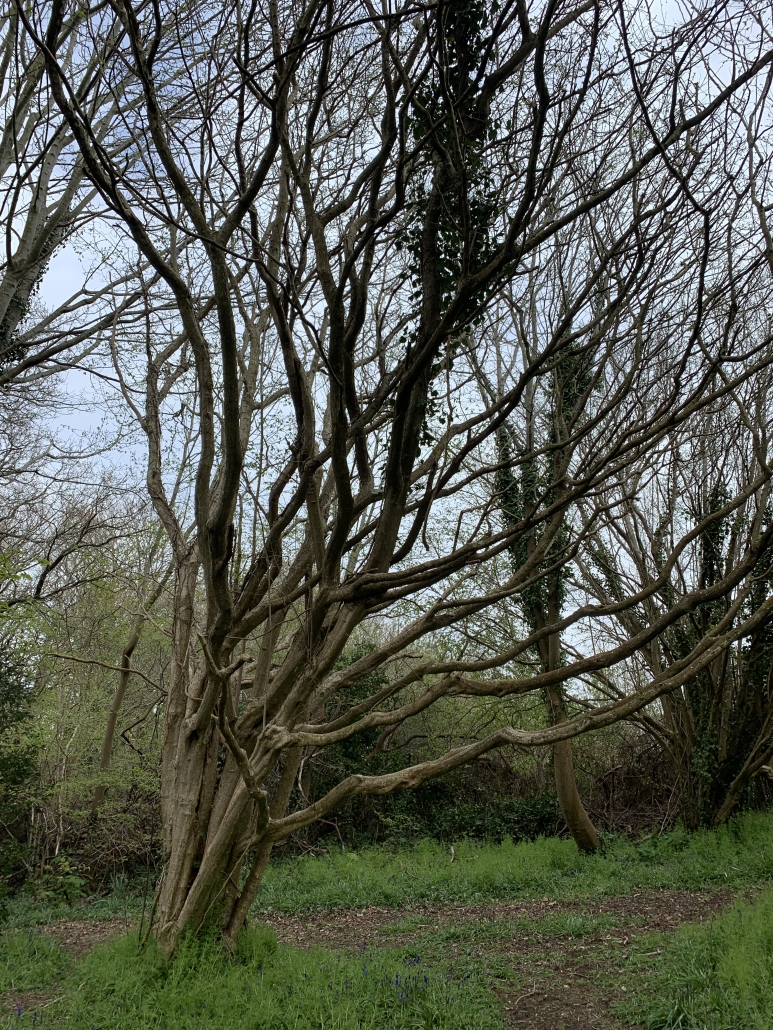Songs Beneath the Sibden Trees
Songs Beneath the Trees is a collection of songs written specifically for Sibden Hill in Shanklin. Follow the trail to hear five beautiful songs under the trees that inspired local musician, Paul Armfield, to create them.

Click here to download the map and music notes
The Oak Tree

This was inspired by hearing that despite the majority of our oaks being felled to build the British naval fleet, there were still many oaks that were not touched, with wood being imported from elsewhere. It would be nice to think that they were spared the axe because communities appreciated their beauty and maybe had sentimental associations with them as places of shelter, places to meet. There are two main types of oak in the UK, sessile and pedunculate, wonderful words that I was keen to include… somehow!
The Beech Tree

The word ‘book’ is derived from the word ‘beech’, as the first runic inscriptions were made on thin slivers of its wood, indeed the beech is the favoured tree for lovers to carve their initials and there are arborglyphs to be found in this wood, they can last many decades, growing bigger and fainter. Elsewhere on the beech trees there are often many naturally appearing ‘eyes’ looking down on this early form of graffiti. I have written the song as if the beech tree bears witness to whole life stories as they are lived out beneath its branches as written in a book. (Please don’t carve into trees, like cuts on your own flesh, they can be prone to infection and potentially harmful to the tree.)
The Hazel Tree

This part of the wood is what’s known as Standard and Coppice, the standards being the oaks and beech trees and in amongst them the hazel for coppicing, with their many trunks that would be cut every 7 years for hurdles, walking sticks, fences etc. The hazel dormouse seems oddly named, it loves hazelnuts, however, these don’t become edible until Nutting Day, the 14th September, barely in time for the dormouse to eat it’s fill before going into hibernation, it seems a long wait for its favourite food. This song takes the form of an altercation between the impatient dormouse and the hazel tree, I was inspired by Simon Armitage’s recent translation of the 12th century poem ‘The Owl and The Nightingale’, an hilarious exchange of insults.
The Silver Birch

I tried to encapsulate much of the lore and old wives’ tales associated with this ‘Lady Of The Woods’, It is the tree of healing and renewal and is often the first to appear on cleared land. I reference a wonderful poem ‘Birches’ by Robert Frost. On some of the trees on Sibden Hill there was quite a lot of lichen and I’ve tried to evoke that subtle contrast of colours, the pale green turquoise against the bark. Tennyson was the first to describe them as ‘silver’.
The Crab Apple Tree

Shakespeare famously wrote in Romeo and Juliet that ‘A rose by any other name would smell as sweet’. Surprisingly the often crooked and gnarly crab apple is a member of the rose family, and to smell its blossom is confirmation of this, yet it is known by a number of regional names, all of which confirm its reputation as an ugly tree, names such as ‘scrab’, ‘bittersgall’, ‘gribble’ and ‘scrogg’. This particularly ‘broken’ specimen seems to have an indomitable spirit, despite its ugliness and unpalatable fruit it is still somehow defiantly beautiful. They are often alone on the edges of woodland, leading the famed naturalist Oliver Rackham to describe them, somewhat brilliantly as ‘anti-gregarious’.
